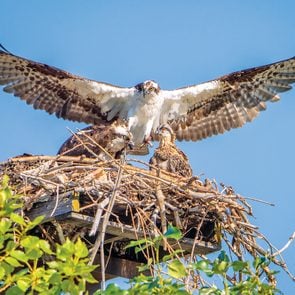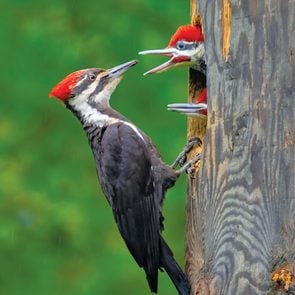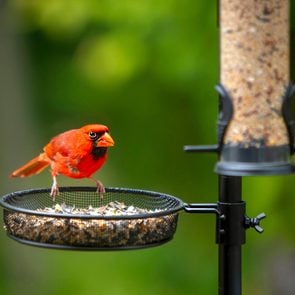Birds of the Grey-Bruce
It’s with good reason bird-watchers flock to the shores of Lake Huron.
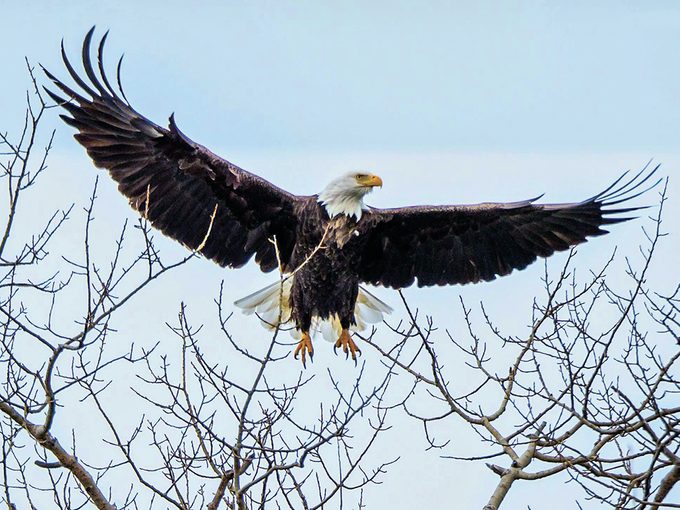
A Bird-Watcher’s Guide to Grey-Bruce
Grey and Bruce counties are a well-kept secret—and not only for their sunsets, hiking escarpments, beautiful beaches and waterfalls. The area is also an incredible place for birding. Over the years, I have been surprised to see how many species of bird make their way home along the coastline of Lake Huron in the Grey-Bruce region.
As a photographer, these creatures draw me outside to explore all of the scenery that makes being outdoors so great.
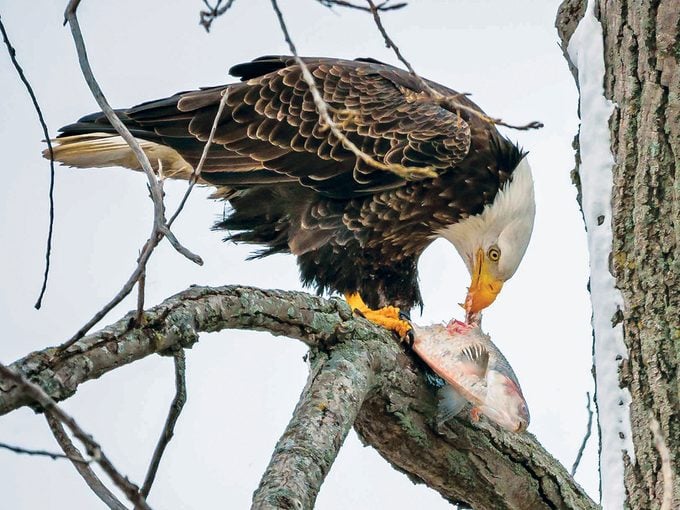
Eagle Scout
One of our feathered friends is the eagle. These beautiful birds of prey with feathered heads are extremely distinguished. Eagles are the nomads of the skies, habitually related to the sky gods. They characterize honesty, truth, leadership, courage and freedom, and many Indigenous cultures hold them as sacred.
Eagles can be seen here in Bruce and Grey counties year-round. They have become accustomed to our climate and society. The presence of this magnificent bird can be seen over larger lakes where food is in abundance.
The eagle can live more than 20 years. Its wingspan can extend to nearly three metres, its body length to a metre. Picture a bald or golden eagle soaring above your head; it’s an amazing view.
The bald eagle looks majestic as it hovers over the water looking for its prey, plunging in to grab a fish near the surface with its strong talons. Eagle eyesight is about five times better than a human’s. They can even spot a fish from a kilometre and a half away. They usually love to nest in large pine or poplar trees to have their dinner.
Eagles also feed on aquatic birds, amphibians and reptiles. This is most likely why they love the Grey-Bruce; there are beautiful lakes all around. Eagles love the rocky shores of the Niagara Escarpment and Georgian Bay coastline, which is ideal year-round for this bird of prey. You can see eagles close to the nuclear power plant because of the open water and abundance and variety of fish that surround the plant.
Check out the best bird-watching spots in every province.
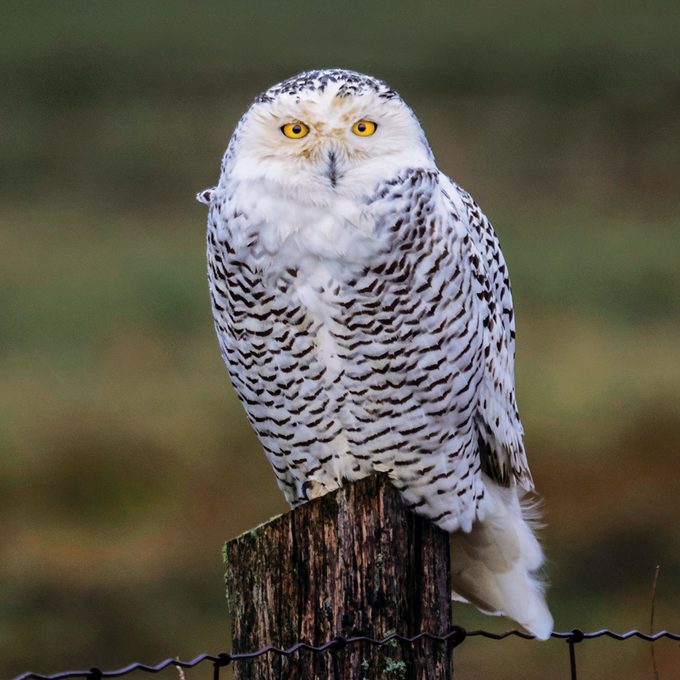
Be Wise With Owls
Contrary to eagles, which hunt during the day, owls are nocturnal or crepuscular birds that prefer to hunt for food in the dark. They have immobile, tubular eyes that provide binocular vision and enable them to fully focus on their prey.
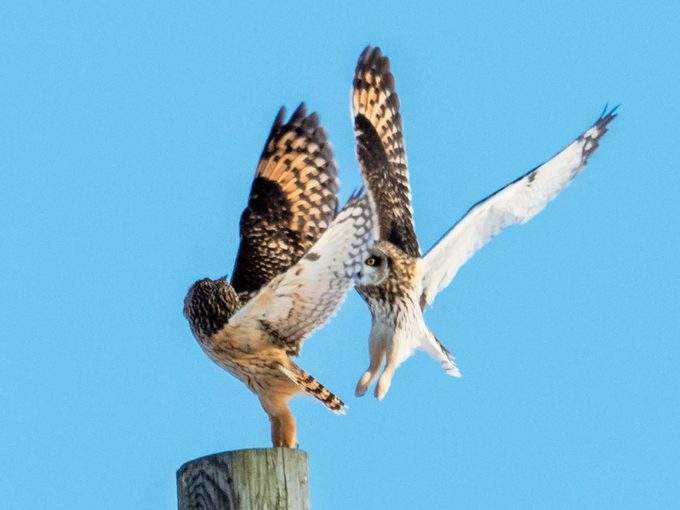
Some owls are comfortable with humans, so photographers can often get good pictures without troubling them too much, but over the years as a photographer I have learned that if an owl is ignoring you, it’s a compliment. When photographing owls, respect their environment by maintaining distance; stay in your car or far away from their territory. If the owl is looking around and away from you, you are stressing this picturesque bird. It might be telling you it’s preparing to fly away, so if you spot an owl always respect its space.
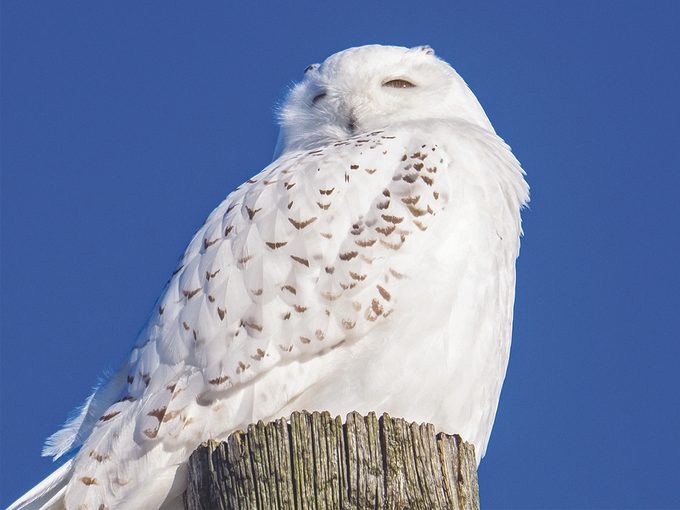
Lately there have been more owls in the Grey-Bruce due to a shortage of prey further up north, where they usually hunt for food. To scout out owls, look for open fields, fences, utility poles or tall trees where they can observe possible prey. Also, the presence of whitewash—splatters of chalky paste on the ground and tree branches, are found around owl roosting spots.
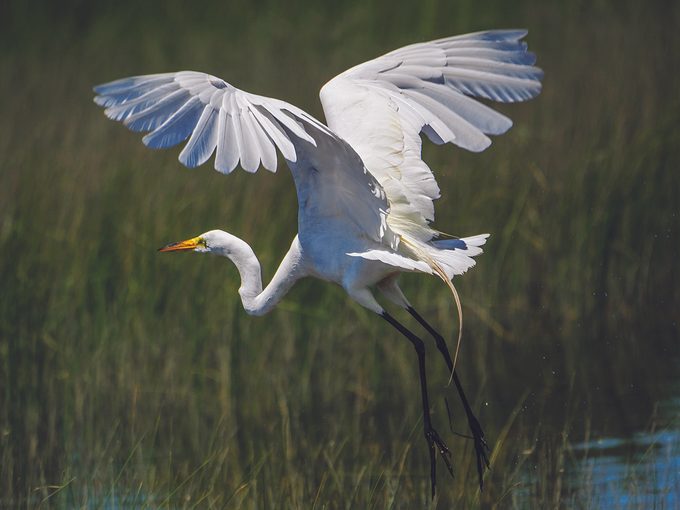
Ready, Set, Egret!
These gracious wading birds have tall legs and long, curved necks. Great egrets have been a proliferating sight in Bruce and Grey counties these past few years. I’ve noticed large numbers of great egrets settling on the beaches in Oliphant, Ontario. The long shoreline and shallow waters are a haven for these beautiful birds.
Great egrets are resourceful scavengers. They walk in shallow water to search for fish, frogs and other small aquatic animals. I have observed these birds standing still for hours, watching and waiting for their unsuspecting prey to pass by. With amazing speed, the egret strikes, poking its long bill into the prey’s neck. Dinner at last!
The rare reddish egret is a medium-sized heron that breeds in Central America, the Bahamas, the Caribbean, the Gulf of the United States and Mexico.
The reddish egret must have taken a wrong turn a couple of years ago when it showed up in Oliphant, encouraging bird lovers to flock to the area. Onlookers from Toronto, Ottawa and even Vancouver stopped by to appreciate the rare sight.
The reddish egret is considered one of the most active herons and is often seen on the move. It will even run around as it hunts for fish in shallow water. This clever bird even casts shadows with its wings to reduce glare on the water, helping it to see better as it prepares to spear its prey. The result is a fascinating dance.
Don’t miss this gorgeous gallery of Canadian birds.
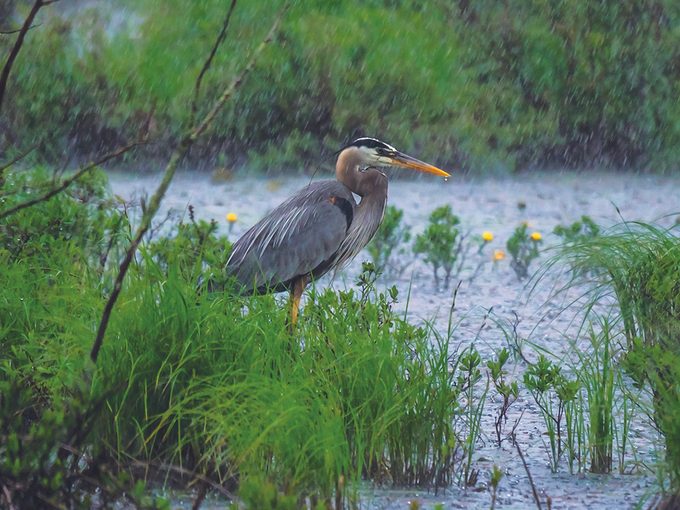
Blue Note
The great blue heron has a blue-grey plumage, and it can be seen standing quietly or taking long, purposeful strides as it hunts. You must be very patient to catch them in action. They move slowly, but they can attack in a blink of an eye to grab a fish or snap up a gopher.
In flight, they are graceful and elegant, the most beautiful bird to look at. The heron flies with a tucked-in neck, long legs trailing out behind.
Great blue herons aren’t likely to stop over in a typical backyard. However, the bird might sometimes play the role of an unwanted visitor if your backyard includes a fish pond.
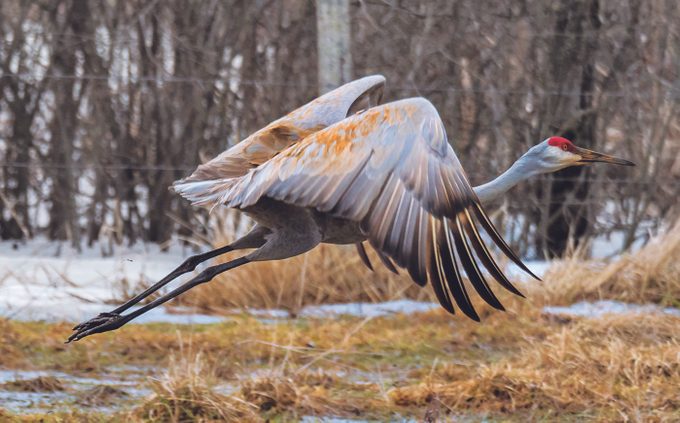
Crane Domain
Another bird that resides in Bruce and Grey counties is the sandhill crane.
The voice of the sandhill crane is sure to be heard from far away. Its loud, rolling trumpet call can be heard up to four kilometres away. This bird is also known for its spirited ballerina-like dance. Tall and red-capped, it is an especially attractive and refined bird.
I’ll never forget one snowy late-autumn day when I was on my way to do a photo shoot. There were several sandhill cranes close to the highway, flying, just singing to one another. It was incredible. I was mesmerized by them still being in the area in that cold weather.
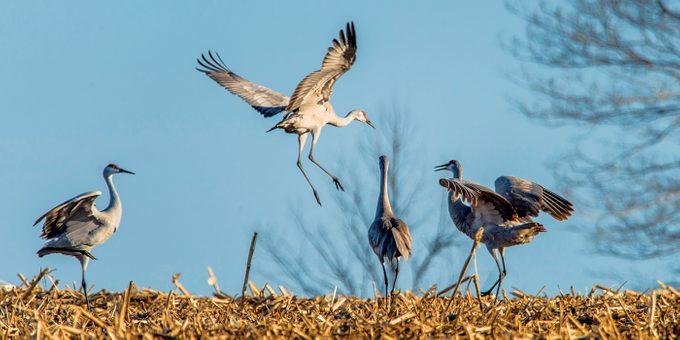
The Endless Appeal of Bird-Watching
In this time of uncertainty—or anytime—bird photography is for everyone. Being outside in the fresh air and enjoying your surroundings with Mother Nature is a healthy choice all around. It’s always on my to-do list.
Getting to know the great outdoors is a lost art in today’s society, but it doesn’t have to be. Everyone can enjoy taking photos with their iPhone or whatever device they have. I find myself motivated to explore our beautiful planet, and it is a stress reliever that brings me serenity.
Bird photographers socialize and learn so much from others, and that’s another reason I love it.
Your brain is a muscle, and to learn and elevate your well-being through birding—what a great way to exercise it.
Discover more must-see attractions in the Grey-Bruce region.
